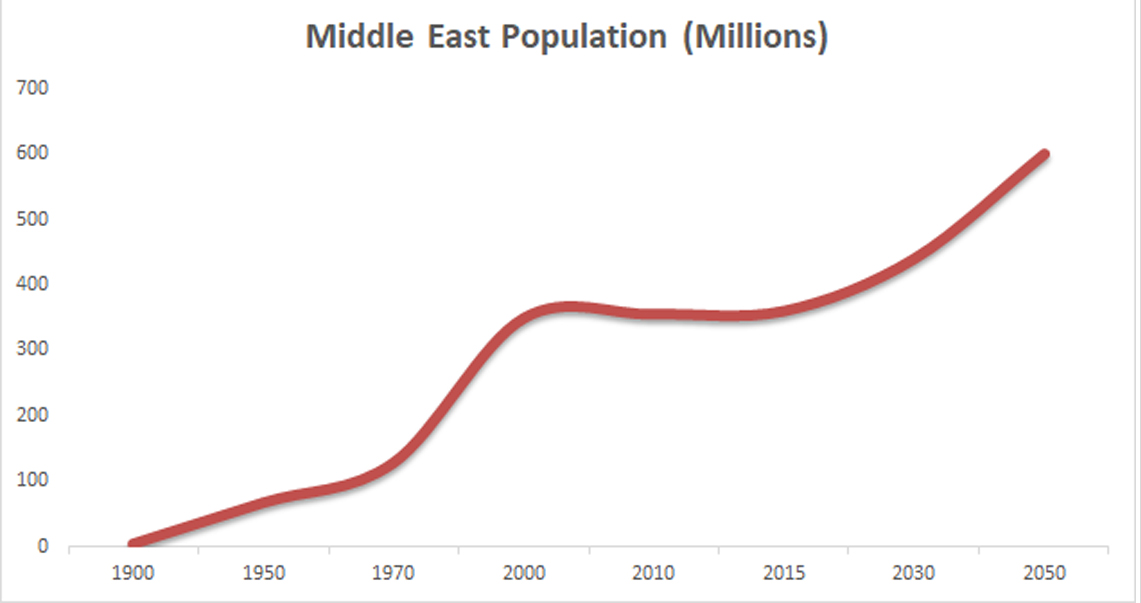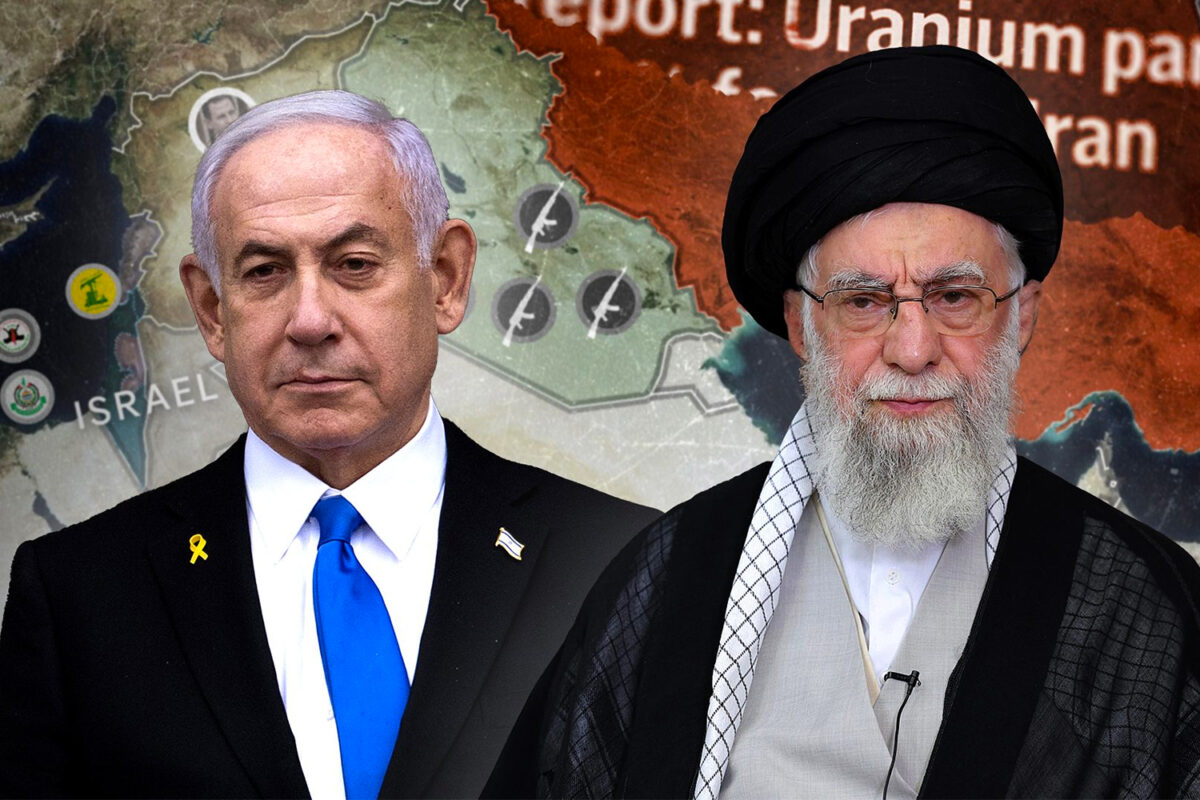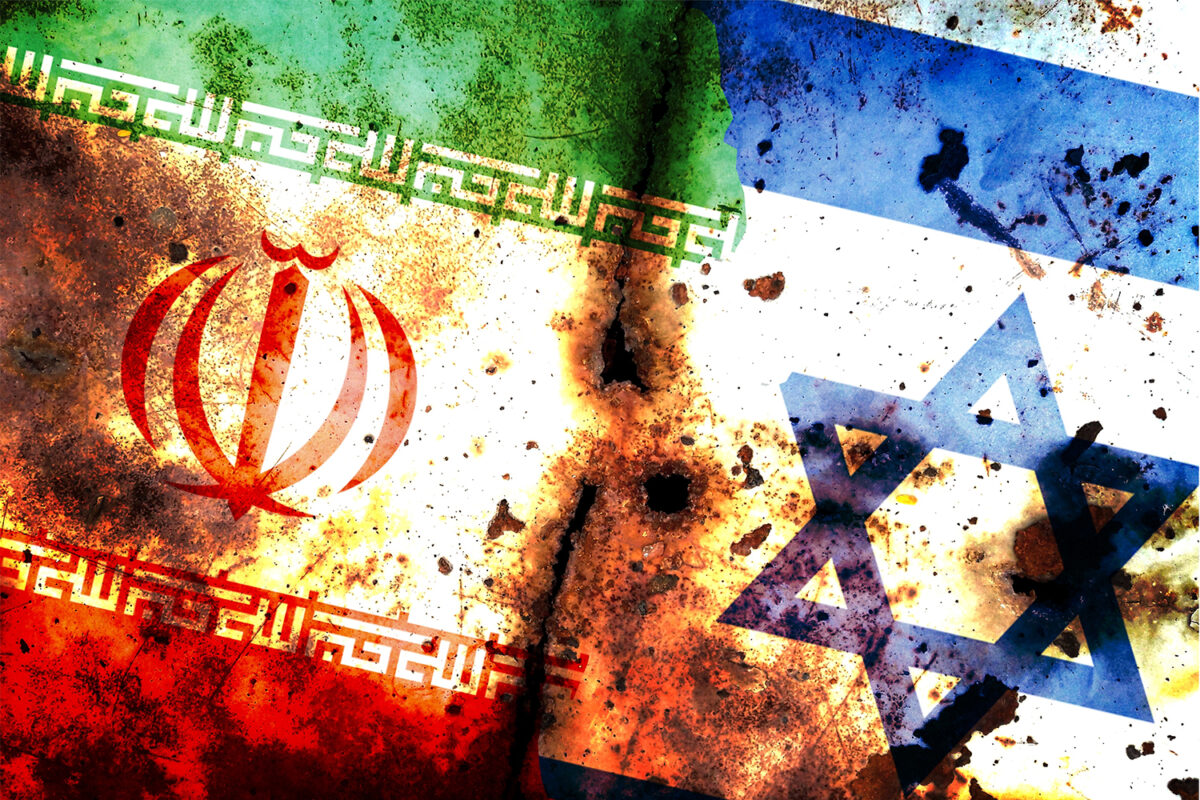22 Nations constitute the Arab region, which is considered the Middle East today. This region begins with Morocco and Mauritania in the Atlantic to Somalia and Sudan, all constituting the North African element of the region. Then on the Arabian Peninsula the region constitutes Iraq and Syria in the North all the way down to Yemen and up to Kuwait in the East.
This region, even before Islam came to the region constituted harsh desert terrain, with much of the population centred on major lakes or coasts. At the turn of the 20th century the population of the Arabian Peninsula was around 4 million. Egypt had a population of 8 million, Sudan 4 million, Algeria 4 million. The Ottomans although in decline ruled over a population of 30 million inhabitants. The Middle East from Morocco to the Red sea had a demography of somewhere between 20-25 million.
By 1950, the population of the Middle East had grown to 67 million inhabitants. Just 20 years later the Arab population doubled to 128 million. From 1950 to 2000, the Middle East experienced explosive population growth. The region’s population grew from 67 million to 349 million, a five-fold increase, or over 2.7% a year. Just 100 years earlier the population of the region was a mere 10% of this. All of the countries in the region had much the same experience, Israel grew at 3.2% a year, Iran at just over 2.7%, and the Arab countries at just under 2.7%. In 2010, the population of the Middle East had grown to 355 million. The population of the Middle East reached 360 million at the beginning 2016.
To give some perspective to these demographics, one in 20 people in the world live in the 22 countries of the Arab Region. The Middle East is the world’s most rapidly growing region in the world after Sub Saharan Africa. Today, about half of the region’s population reside in just 3 of those countries – Algeria, Egypt and Sudan. In the 21st century the Middle East has grown faster than both China and India.
The age structure of the region is heavily favoured towards the young. Currently, the population of the Arab Region is still young, with children under age 15 accounting for 33% of the population and young persons aged 15 to 24 years account for another 20% of the population. Thus, the majority of the region’s population of 54% is under the age of 25. By comparison, 48% of the population of developing countries and 29% of the population of developed countries is under the age of 25. The number of people in the main working ages, 25 to 59 years, is also at an all-time high in the region, totalling 145 million. The size of the working age population is expected to almost double by 2050, to reach 278 million. The large working age population can provide opportunities for economic development if meaningful employment can be generated. Up to 1 million new workers will be looking for employment every year up to 2015, employment that does not exists.
By 2030 the population in the Middle East is expected to grow to 440 million.[1] According to the UN Arab Human Development Report (AHDR), based on the 2010 projection, the Arab Region will have nearly 600 million inhabitants by 2050. It also expects Iraq, the Occupied Palestinian Territory, Somalia and Yemen to double in population from 2010 – 2050. If the countries of the Arab Region were to maintain current levels of fertility, the population of the region would more than double to reach 781 million by 2050.
The Middle East has a history of a rapidly increasing population. This has been due to the higher fertility rates and, thus, more-rapid rates of population growth. A rate of 2.1 children per women roughly serves to replace the current generation. Fertility rates in Saudi Arabia are 3.4 children per woman, while, in the Czech Republic and South Korea, rates are 1.4 and 1.3 children per woman, respectively. Kuwait, with a per capita GDP comparable to that of Spain, had a fertility rate of 2.9 children per woman in 2007 compared to 1.3 in Spain.
After a century of explosive growth fertility rates have slowed and are projected to slow further from 2020. The population in the Middle East until 2050 is only going in one direction and this is up, although the rate of growth is expected to slow. What this means, going forward, there is few places in the world that will be subject to as much pressure from growing numbers of people as the Arab world. This rising population will need to be watered, housed; they will need new and modern transportation systems and labour markets. Competition for jobs, especially government jobs, and housing and the poor quality and inadequate provision of public services are prime causes of the deep dissatisfaction with the status quo that marks so many of these societies. The stress these demographic pressures exert—and regional governments’ ability to mitigate them—will play a major role in determining the future trajectory of the region.
Because of the large increases in population, the number of young people entering the labour markets of these countries has been rising rapidly. The labour supply will continue to expand rapidly for the next decade, adding to the difficulties young people face in finding employment that meets their expectations. For the moment, the rulers in the region have not published or mentioned how they plan to deal with this rapidly growing population.
In the medium to long term, the Middle East will see a larger population, consisting mainly of young persons. They will need jobs, be housed and want a say in the governing of their nations. When the Middle East was rapidly growing during the 1980s and 1990s the rulers used their secret service, army and autocracy to maintain cohesion. Until now, they have not presented any alternative on how they plan to deal with the challenges that a growing demographic brings with it.
[1] The future of the global Muslim population, Pew Research Centre, 2011, retrieved 9 July 2015, http://www.pewforum.org/2011/01/27/future-of-the-global-muslim-population-regional-middle-east





